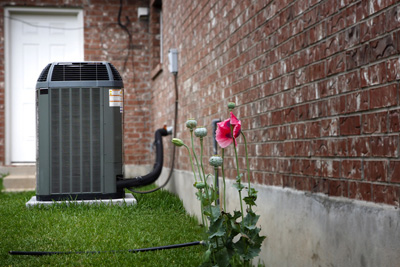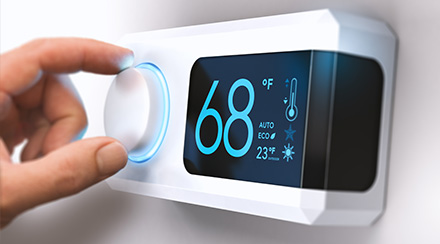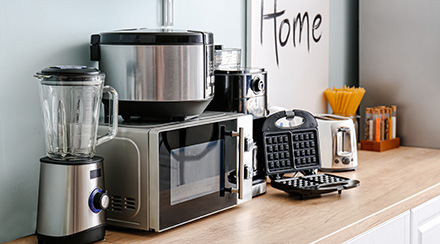What is an SEER Rating – And Why Is It Important?

If you’ve ever shopped for a new air conditioner, you probably have experience comparing SEER ratings. Required by federal regulation, SEER ratings make it easy to compare the energy efficiency of different cooling systems, and are one of the most important data points in any HVAC purchase decision. But many homeowners are unfamiliar with what SEER ratings actually tell us – or how they’ve changed in recent years.
Definition of SEER: What Is a Seasonal Energy Efficiency Ratio?
SEER stands for “seasonal energy efficiency ratio” and is a measurement used to quantify and standardize the energy efficiency of cooling systems, including air conditioners and heat pumps. SEER ratings are based on a complex formula that factors in a range of environmental conditions designed to simulate an entire cooling season. The higher a system’s SEER rating is, the more energy efficient the system is.
SEER2: A New Standard

As of January 1, 2023, the U.S. Department of Energy is requiring cooling system manufacturers to comply with a new energy efficiency rating system called SEER2. SEER2 is similar to SEER, but reflects advances in testing technology that allow for more accurate measurements.
The main difference between the old standard and the new one is the amount of external static pressure that is applied during the testing process. Research has found that the original SEER standards do not accurately reflect the influence of ductwork and external static pressure on system efficiency, and SEER2 corrects for this.
SEER vs. EER
There’s another efficiency rating you might see if you’re comparing cooling systems: EER, or “energy efficiency ratio.” Unlike SEER or SEER2, which simulate a range of atmospheric conditions, EER is a single energy efficiency measurement based on one universal set of conditions: 95° F outside, 80° F inside and 50 percent humidity.
EER is the original standardized energy efficiency measurement that saw widespread use starting in the 1970s. SEER ratings were required for cooling systems starting in 1992. As of January 1, 2023, EER ratings have also been replaced by EER2 ratings. The temperature standards of EER and EER2 are the same, but EER2 reflects the same new external static pressure standards as SEER2.
Why Does Your AC SEER Rating Matter?
If you’re shopping for a new cooling system under the new testing standards, SEER2 ratings can help you compare the energy efficiency of different systems at a glance. They don’t tell you everything you need to know, but they may allow you to quickly narrow your field of choices or make a difficult decision between two similar models.
Systems with higher SEER2 ratings tend to have higher purchase prices, but lower operating costs. So if you live in an area where electricity tends to be expensive, or a hot region where you use air conditioning frequently, a more expensive system with a high SEER2 rating may be able to help you save a lot of money overall.
There are other benefits to systems with high SEER2 ratings. These systems often have more sophisticated components than lower-rated systems, such as variable speed blowers or two-stage compressors, which can make homes feel more comfortable during the warmer months. And because they consume less energy, they’re better for the environment.
Home cooling systems should always be installed by a licensed HVAC technician, so you can ask your installer if you have questions about SEER2 ratings, energy efficiency or which system is best for your home and budget. But if you’re just doing a little window shopping to price-check systems with different efficiency levels, SEER2 ratings will make it easy to compare and contrast.
If you’re looking for ways to feel cooler at home while using less energy, you might want to invest in some home improvements. Our guide to weatherizing your home for summer offers advice for making your home more energy efficient, especially when it comes to your cooling equipment. For ways to save money, we've put together air-conditioning and energy-saving tips to help you lower your electricity bill in the summer.
Looking for Something Specific?
Select a category to find resources for topics that interest you.
Select Category

Related Articles:

Tips for Improving Your AC and Furnace Efficiency
We share maintenance tips for your heater and AC, and home improvement tips to help you use those systems less.
Read Article
Tips for Saving on Energy in Your Home
If you’re looking to learn more about energy efficiency for home systems and appliances, we’re sharing our favorite energy-saving tips.
Read Article
What Uses the Most Electricity In a Home?
We break down what uses the most energy in your home to give you an understanding of where your energy usage goes and where energy-saving tactics can make the most impact.
Read ArticleWhat is an SEER Rating – And Why Is It Important?
If you’ve ever shopped for a new air conditioner, you probably have experience comparing SEER ratings. Required by federal regulation, SEER ratings make it easy to compare the energy efficiency of different cooling systems, and are one of the most important data points in any HVAC purchase decision. But many homeowners are unfamiliar with what SEER ratings actually tell us – or how they’ve changed in recent years.
Definition of SEER: What Is a Seasonal Energy Efficiency Ratio?
SEER stands for “seasonal energy efficiency ratio” and is a measurement used to quantify and standardize the energy efficiency of cooling systems, including air conditioners and heat pumps. SEER ratings are based on a complex formula that factors in a range of environmental conditions designed to simulate an entire cooling season. The higher a system’s SEER rating is, the more energy efficient the system is.
SEER2: A New Standard
As of January 1, 2023, the U.S. Department of Energy is requiring cooling system manufacturers to comply with a new energy efficiency rating system called SEER2. SEER2 is similar to SEER, but reflects advances in testing technology that allow for more accurate measurements.
The main difference between the old standard and the new one is the amount of external static pressure that is applied during the testing process. Research has found that the original SEER standards do not accurately reflect the influence of ductwork and external static pressure on system efficiency, and SEER2 corrects for this.
SEER vs. EER
There’s another efficiency rating you might see if you’re comparing cooling systems: EER, or “energy efficiency ratio.” Unlike SEER or SEER2, which simulate a range of atmospheric conditions, EER is a single energy efficiency measurement based on one universal set of conditions: 95° F outside, 80° F inside and 50 percent humidity.
EER is the original standardized energy efficiency measurement that saw widespread use starting in the 1970s. SEER ratings were required for cooling systems starting in 1992. As of January 1, 2023, EER ratings have also been replaced by EER2 ratings. The temperature standards of EER and EER2 are the same, but EER2 reflects the same new external static pressure standards as SEER2.
Why Does Your AC SEER Rating Matter?
If you’re shopping for a new cooling system under the new testing standards, SEER2 ratings can help you compare the energy efficiency of different systems at a glance. They don’t tell you everything you need to know, but they may allow you to quickly narrow your field of choices or make a difficult decision between two similar models.
Systems with higher SEER2 ratings tend to have higher purchase prices, but lower operating costs. So if you live in an area where electricity tends to be expensive, or a hot region where you use air conditioning frequently, a more expensive system with a high SEER2 rating may be able to help you save a lot of money overall.
There are other benefits to systems with high SEER2 ratings. These systems often have more sophisticated components than lower-rated systems, such as variable speed blowers or two-stage compressors, which can make homes feel more comfortable during the warmer months. And because they consume less energy, they’re better for the environment.
Home cooling systems should always be installed by a licensed HVAC technician, so you can ask your installer if you have questions about SEER2 ratings, energy efficiency or which system is best for your home and budget. But if you’re just doing a little window shopping to price-check systems with different efficiency levels, SEER2 ratings will make it easy to compare and contrast.
If you’re looking for ways to feel cooler at home while using less energy, you might want to invest in some home improvements. Our guide to weatherizing your home for summer offers advice for making your home more energy efficient, especially when it comes to your cooling equipment. For ways to save money, we've put together air-conditioning and energy-saving tips to help you lower your electricity bill in the summer.
Looking for Something Specific?
Select a category to find resources for topics that interest you.
Select Category

Related Articles:

Tips for Improving Your AC and Furnace Efficiency
We share maintenance tips for your heater and AC, and home improvement tips to help you use those systems less.
Read Article
Tips for Saving on Energy in Your Home
If you’re looking to learn more about energy efficiency for home systems and appliances, we’re sharing our favorite energy-saving tips.
Read Article
What Uses the Most Electricity In a Home?
We break down what uses the most energy in your home to give you an understanding of where your energy usage goes and where energy-saving tactics can make the most impact.
Read Article






